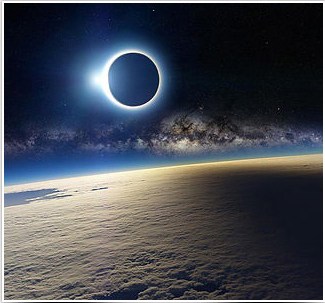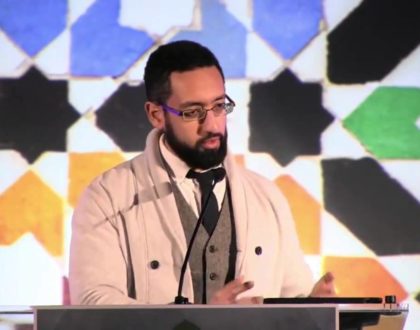The Lunar Dates and the Unity of the Muslims

By: Faysal Burhan
Published: 2010
Deciding the lunar dates to coordinate the Islamic festivities to bring about unification during these events has been a point of sore and sometimes contention for North America’s Muslims. In predominantly Muslim countries, all Muslims follow the decision made by their respective authority of Shari’ah for the beginning of any celebration and the month of Ramadan date. The Shari’ah authority can be the Ministry of Fatwa (verdicts) or the Department of Justice.
In those countries, no mosque or religious entity would violate Shari’ah and celebrate the event on a different day since Shari’ah protects the community as a whole and the individual members. However, because of the diverse Muslim population of North America and the absence of the structure found in Muslim countries, it has been difficult to celebrate their festivities and begin fasting Ramadan as a united community. Besides, many North American Muslims influenced by the dominant philosophy or schools of thought in their respective mother countries often affect the lunar dates’ decision differently. Individual mosques and Islamic centers across America and Canada have often celebrated these festivities separately, defeating these communal rituals’ purpose.
Many Muslim organizations in North America, such as the Islamic Society of North America (ISNA), the Islamic Center of Southern California (ICSC), the Islamic Shura Councils of North America and Southern California, and the Fiqh Council of North America, established committees and specialized tasks to remedy this sore case. As part of its administration, ISNA created a Moon Sighting Committee whose sole responsibility is determining these Islamic occasions’ lunar dates. The ICSC and the Moon Sighting Committee of ISNA consult astronomers and apply astronomical data to determine the lunar dates. It is also evident that ISNA’s Moon Sighting Committee has worked with several other Fatwa, astronomical, and moon-sighting committees in the Middle East, notably Saudi Arabia, to make decisions.
These organizations’ solutions are the relevant issues of Muslims in North America since many must give in-advance notice to leave work. Another matter pertinent to Muslims in North America is reserving large convention centers several months in advance to accommodate their crowded festivities. These critical considerations are irrelevant issues for the Muslims overseas given a holiday by their respective countries and have adequate accommodations.
Other Islamic centers and organizations in North America took a separate decision from that of ISNA, the Islamic Shura and Fiqh Councils of North America, or ICSC. They followed a different verdict, yet others insisted on obeying Saudi Arabia.
Although there are several methods for determining the lunar dates for these occasions, no single approach should undermine the Muslim community’s unity. Such an act would directly conflict with the spirit of Shari’ah and the particular occasion. Unison is why no single mosque or Islamic organization in Syria, Egypt, Saudi Arabia, or any other Muslim country defies the decision made by their respective state to follow that of another. Furthermore, in determining the lunar dates, the Prophet Muhammad’s Sunnah is solely based on the best of the astronomical foundations. Here are the Prophet’s Traditions for Ramadan:
“We are Umah (a nation) Umiyah (unlettered). We do not write [in astronomical circles,] nor do we calculate [to arrive at the correct lunar dates.] The Month [of Ramadan] hakatha wa hakatha, [meaning a time 29 days and another time 30 days.]”
In a different Hadith, the Prophet (PBUH) said:
“Therefore, fast when you see the moon and break your fast when you see the next moon. But if you cannot see it, then complete thirty days in fasting.” -Muslim
The above Traditions of Prophet Muhammad (PBUH) have three important key points.
-
Prophet Muhammad (PBUH) seeks a definite date to begin fasting during Ramadan. However, the Prophet points out that the resources available for making an accurate decision are inadequate in the absence of advanced astronomical calculations, “We are an unlettered nation concerning writing [in astronomical circles] and mathematical calculations.”
-
It is also apparent that the Prophet (PBUH) considered the best mechanism available to him to determine the beginning of the fast. “Fast when you see the moon and break the fast when you see the next moon.”
-
Without accurate astronomical data, the second Tradition of the Prophet implies no particular divinity missed out by not starting or ending the month of Ramadan according to the exact astronomical dates. “If the circumstances did not allow you to see the next moon, then complete the month to thirty days.” Thirty days are the worst-case scenario, irrespective of the actual days of the month.
On one occasion, the Prophet (PBUH) did not give his companions special instructions when they informed him that the moon appeared to be two or three days old. His response was “‘amdahu Allahu Lilru’ya,’ meaning, God extended it to see.” (Muslim, The Book of Fasting).
Appreciating the rationality of the Prophet (PBUH) over the in-exclusivity of crescent observation issues, see Sahih Muslim, “The Book of Fasting, Irrelevancy of whether the New Moon is Larger [or not]” And “Do not Fast a Day or Two Days Ahead of Ramadan.”

The primary points discussed in the above Traditions are indisputable facts pointing to the difficulty that the Prophet Muhammad faced. We can see this as astronomical science events later unveil. Today, astronomers tell us that the new moon is born precisely when it is straight between the sun and the earth. Then no sunlight is reflected from it to planet Earth; therefore, it cannot be seen by the human eye. It begins to show when the moon moves away from the straight line. However, the human eye cannot see the new crescent until it is about 18 to 24 hours old. Then it will be skinny and may appear on the horizon for only a few minutes.
See the illustration above from http://www.moonsighting.com.
If the sun’s glare, the moon’s orbit, the relevant sun and moon’s degree to the horizon, the observer’s location on Earth, or other obstacles prevent the crescent’s sighting, indubitably, the following day, the crescent would appear to be over two days old. This difficulty in observing the new moon may explain why Prophet Muhammad (p) did not address the cruciality of Ramadan’s first day. As for the moon’s actual birth, he merely stated the unliterary condition of his people to determine its birth time accurately. To better understand the complications surrounding moon sightings, please visit http://www.ummah.net/moonsighting/.
Unfortunately, many Muslims did not observe the above Traditions of the Prophet (p) and his adaptability of the best method available. This technique of using available means in solving present matters is the correct Sunnah of the Prophet that Muslims must be inspired by and draw upon.
With today’s astronomical vantage, Muslims can accurately establish the beginning and end of all the lunar months for all Muslim nations worldwide. The lunar data has already been utilized by many civil and military organizations worldwide for their benefit. Using the lunar data will lead to uniting the Ummah during its festivities, the least and foremost. It will make us among those who follow the Prophet Muhammad’s way of adopting the best solution available.
Dr. Muzammil Siddiqi, the Chairman of the Islamic Shura Council of Southern California, President of the Fiqh Council of North America, and ex-President of ISNA, agrees with the aforementioned approach of using the most accurate data available in determining the Muslim holy days. Dr. Siddiqi said:
-
The sighting was needed because the Ummah was not in a position to calculate accurately.
-
It was the Sunnah of the Prophet to use the most accurate method available to him at that time, so astronomical information is the most accurate method available to us.
Thus it is Sunnah to rely on the astronomical information for determining Islamic dates.”
Dr. Maher Hathout, the senior advisor for ICSC and the Muslim Public Affairs Council, also fully agrees with this approach. Dr. Hathout wrote the following note:
“It was 17 years ago; that the ICSC adopted the scientific calculation method for deciding the beginning and end of the lunar months. We felt that this is how to live in the modern age and enable Muslims, particularly in America, to schedule their holy seasons and push them to be officially recognized. Hopefully, this method to determine the lunar times will maintain the unity of the Ummah. We agree with the Islamic argument elucidated by Brother Burhan. We hope to consider the moon’s birth as the decisive factor, not its so-called “visibility,” which again leads to a different set of divisions and confusions.”
The disunity of North America’s Muslims over the festival dates has reached considerable disgrace. No verdict or philosophy should take a higher priority than that which safeguards the Muslim Ummah’s health and unity. To further this noble point, Dr. Muzammil Siddiqi said:
“Muslims must agree on one authority and let this authority make the decision. Individual Islamic centers and mosques should not give their opinions because this causes confusion, division, and disunity.”
The mechanisms to unite the Muslims would work best based on pure faith, stripped away from human emotions, politics, philosophy, and personal agendas. Mathematics and astronomical data are precisely that. The expertise, study, and research taken by ISNA’s Moon Sighting Committee and the ICSC align with the Sunnah of the Prophet and Islam’s spirit. I encourage all Muslim communities to follow the lead of these organizations in making unified festival dates. Prophet Muhammad (PBUH) said:
“My Ummah cannot go astray when they get together on a matter.” -Ahmad & al-Tabarani.
He also said:
“(Alikum be-alJama’ah, be [working] all together and (Iyakum) be careful of (furqah) separatism.” -Al Termezi
Islam is a universal religion, suitable for all times and places. Muslims do Islam a great injustice when they confine its global capacity to the elements available to Mecca and Medina during the seventh century. We must understand the severity of our disunity over matters dragging us further away from this faith’s cause and core values. We have made Islam appear to the technologically advanced world as poorly literate and disadvantaged because of our improper practice.
Allah and His Prophet set forth wise guidelines to lead Muslims to prosperity. Early Muslims, such as al Khayam (11-12th century), created astronomical tables and the solar calendar, which is widely used today. The Muslims of Cordoba devised the more popular Farmer’s calendar, Almanac, which reflects the Arabic word al-manakh, meaning the climate. By using today’s advanced calculations and astronomical data, the Muslims of North America can lead the Muslim world into unity in this matter, and a golden opportunity should not be missed. I ask Allah to open my heart and all Muslims’ hearts to see Prophet Muhammad’s (PBUH) correct guidelines in resolving issues, his easygoing personality, and the essence and intent of this faith.
Muslims of North America Invented a Unified Solution
Our gratitude to Allah to the Institute of Arabic and Islamic Studies, the Islamic Shura Council of Southern California, the Fiqh Council of North America, and other active Islamic centers and astronomical organizations, and experts, such as the Moon Sighting, have designed a solution to indecisiveness and chaos over the timing of the Islamic festivals and lunar months.
Over eighty Islamic organizations and astronomers initiated a universal solution giving all Muslims in America and the world an advanced festival and lunar months timing for managing their life affairs. This initiation in 2005 has facilitated the lives and relationships of most Muslims in North America. Consult with the Islamic Shura Council of Southern California and the Fiqh Council of North America for details.
Other useful articles on this subject.
1- The Saudi Hajj Decision Rifts American Muslims, by Dr. Mohammad Auwal, Associate Professor of Communication Studies at California State Univ., Los Angeles.
2- Determination of Eid al-Adha, by Justice Maulana Mufti M. Taqi Usmani.
3- Message from Zaytuna Institute, by Imam Zaid Shakir.
4- ISNA’s Position on Eid-al-Adha, by Dr. Muzammil Siddiqi, Chairman of the Shura Council of Southern California, President of the Fiqh Council of North America, and ex-President of ISNA.
For more information on determining the Eid al-Adha date, please see http://moonsighting.com/eid-al-adha.html.




